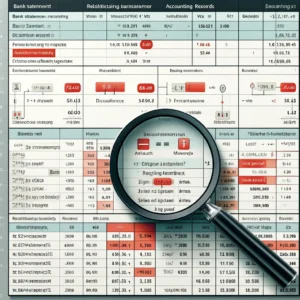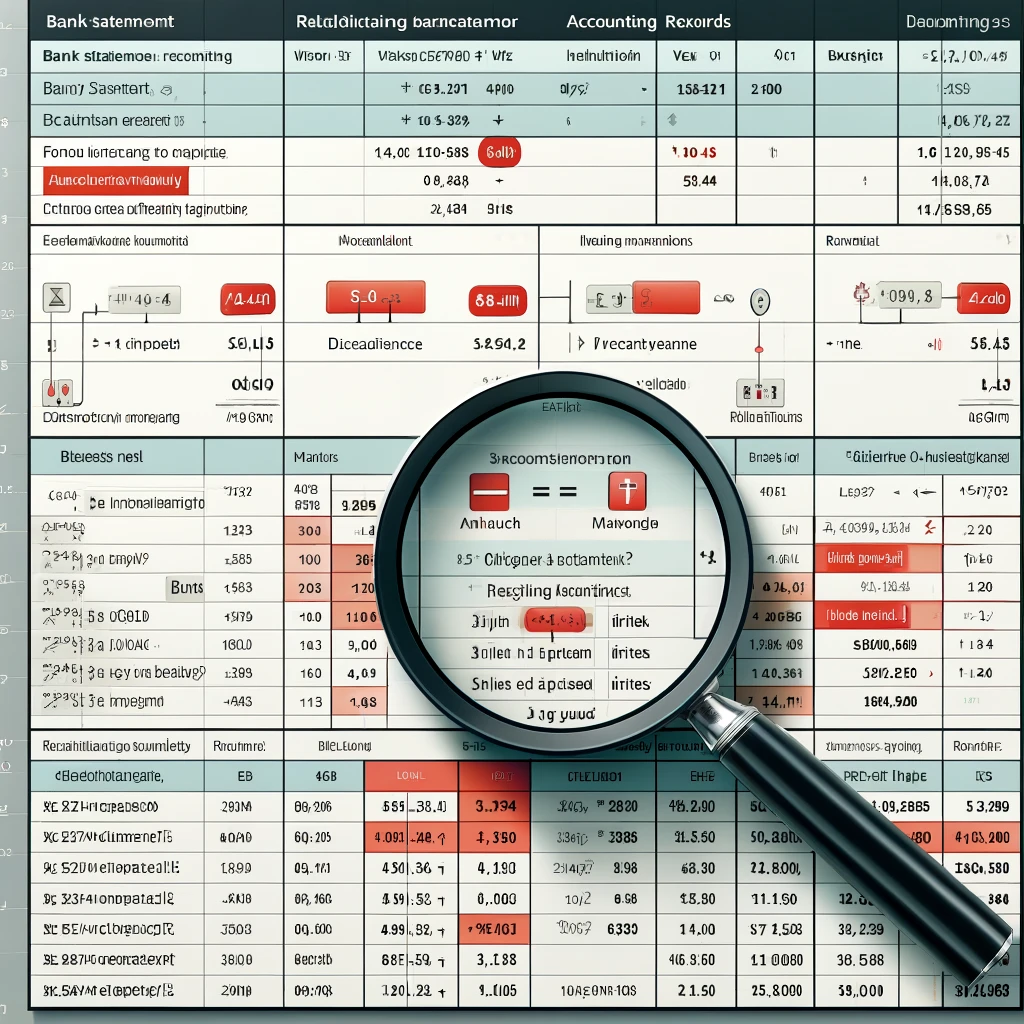MASTERING BANK RECONCILIATION:
SIMPLIFY YOUR FINANCIAL RECORDS WITH MS EXCEL

Outline for Your Article
1. Introduction
- Brief overview of what bank reconciliation is.
- Why reconciling bank statements with accounting records is critical for businesses.
- Role of MS Excel in simplifying the reconciliation process.
2. Importance of Bank Reconciliation
- Preventing discrepancies in financial records.
- Detecting errors, fraud, or unauthorized transactions.
- Ensuring accurate financial reporting.
3. Steps in the Reconciliation Process Using MS Excel
Detailed Explanation of the Reconciliation Process in MS Excel
Step 1: Prepare Your Data
- Bank Statement: Export bank transaction data into Microsoft Excel (usually as CSV).
- Accounting Records: Extract data from your accounting software or manual ledger into Excel.
Step 2: Format the Data in Excel
- Ensure the data from both sources have consistent formats.
- Key fields to include:
- Date
- Description
- Transaction Type (Deposit/Withdrawal)
- Amount
- Balance
Step 3: Use Excel Formulas for Reconciliation
- Match Transactions Between Bank and Records
- Use the VLOOKUP or INDEX-MATCH formula to match transactions from the bank statement to the accounting records.
=VLOOKUP([@Transaction_ID], AccountingRecords!A:E, 3, FALSE)
- Adjust column references based on your data.
- Highlight Unmatched Transactions
- Use Conditional Formatting to highlight unmatched items:
- Compare transaction amounts between the two datasets.
Formula for conditional formatting:
=ISNA(MATCH(A2, AccountingRecords!A:A, 0))
- Calculate the Differences
Use formulas to calculate differences between the bank and ledger amounts:
=BankStatementAmount – AccountingRecordAmount
- Running Totals
Use the SUM or SUBTOTAL function to verify running balances:
=SUM(B2:B10)
- Reconciliation Check
Create a check formula to verify if the closing balance in the bank statement matches the ledger:
=IF(BankClosingBalance = LedgerClosingBalance, “Reconciled”, “Discrepancy”)
Step 4: Identify and Resolve Discrepancies
- List unmatched transactions or discrepancies in a separate sheet for review.
- Categorize discrepancies, such as:
- Timing Differences: Outstanding checks or deposits in transit.
- Errors: Incorrect entries in records or bank statements.
Step 5: Document and Adjust
- Document reconciliation adjustments directly in Excel:
- Use formulas to adjust balances.
- Keep a log of adjustments for audit purposes.
Step 6: Automate the Process
- Use Pivot Tables to summarize transactions.
- Record an Excel Macro for repetitive reconciliation tasks.
Formulas Commonly Used in Reconciliation
|
Formula/Feature |
Purpose |
| VLOOKUP | Match bank transactions with ledger entries. |
| INDEX-MATCH | Alternative to VLOOKUP for flexible lookups. |
| SUMIF/SUMIFS | Summing amounts based on multiple criteria. |
| IF | Logical comparison (e.g., reconciliation checks). |
| ISNA/ISERROR | Identify unmatched or erroneous data. |
| MATCH | Find the position of specific transactions within a dataset. |
| SUBTOTAL | Calculate running totals while ignoring filtered rows. |
| Conditional Formatting | Highlight discrepancies visually for easier review. |
Conclusion
- Summarize the benefits of using Excel for bank reconciliation.
- Emphasize the importance of regular reconciliation for financial accuracy.
- Encourage automating the process with advanced Excel features.

